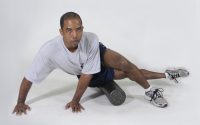Massage after exercise, doesn’t improve circulation to the muscles or removal of lactic acid
Massage after exercise, doesn’t improve circulation to the muscles or removal of lactic acid, researchers in Canada said. “This dispels a common belief in the general public about the way in which massage is beneficial,” Michael Tschakovsky, a professor at Queen’s University in Kingston, said in a statement.
The belief that massage aids in the removal of lactic acid from muscle tissue is so pervasive it is even listed on the Canadian Sports Massage Therapists website as one of the benefits of massage, despite there being absolutely no scientific research to back this up. “It also dispels that belief among people in the physical therapy profession. All the physical therapy professionals that I have talked to, when asked what massage does, answer that it improves muscle blood flow and helps get rid of lactic acid. Ours is the first study to challenge this and rigorously test its validity.”
Kinesiology master’s degree candidate Vicky Wiltshire and Tschakovsky show that massage actually impairs blood flow to the muscle after exercise and that it therefore also impairs the removal of lactic acid from muscle after exercise. The study is to be presented at the annual American College of Sports Medicine conference May 27-30 in Seattle.
So massage isn’t helpful?
“What we’re saying with this research …it’s not that massage isn’t good,” said Tschakovsky. “It’s just that the common perception that it increases blood flow and helps in the removal of lactic acid isn’t correct.” A lot of runners were convinced the theory was correct. Tschakovsky says if massage does improve performance and help you recover more quickly, science has yet to prove how it works. On the other hand, science has not proven that massage hinders performance and recovery. “It feels good, that’s the truth of it. A lot of performance is psychological-based so if you feel better, if you feel you’re in a better situation to do something, it probably has the ability to affect performance.”
“We mistakenly look for massage to have direct mechanical effects. What seems more likely is that massage acts as a new input to a system with a memory. In my observation, fatigued muscles tend to remain hypertonic and shortened. When we cajole specific muscles to relax and lengthen via mechanical and neurological input, we reduce their metabolic activity and the compression they exert on surrounding tissue. In my opinion, it is not the direct action of massage, but the action of massage to create a new homeostasis, that allows the natural process of recovery to occur more efficiently.”
Article from: https://www.sciencedaily.com/releases/2009/05/090507164405.htm
Research article here https://www.ncbi.nlm.nih.gov/pubmed/19997015

